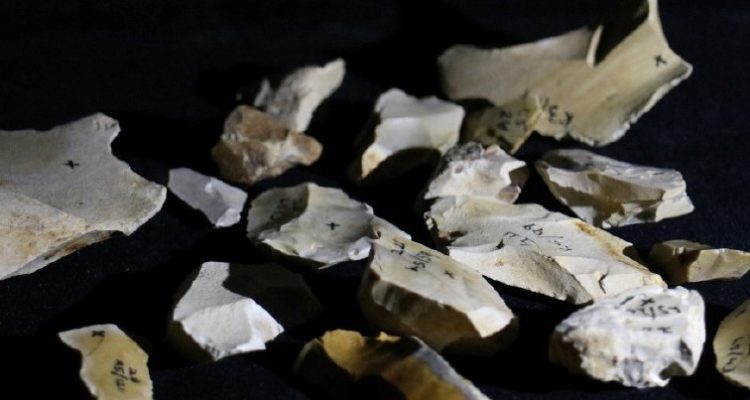Israeli scientists develop new method for detecting presence of fire at archaeological sites, which may be used by other researchers in the future.
By World Israel News Staff
A team of Israeli researchers from the Weizmann Institute of Science have used advanced, AI-driven techniques to discover evidence of the use of fire dating back at least 800,000 years.
Drs. Filipe Natalio and Ido Azuri of Weizmann, PhD student Zane Stepka, Dr. Liora Kolska Horwitz from the Hebrew University of Jerusalem, and Prof. Michael Chazan from the University of Toronto presented their discovery in a study published in science journal PNAS.
The team assessed 26 flint tools found at the Evron Quarry site in the Western Galilee, which scientists have previously said date back almost one million years.
Leveraging a number of advanced spectroscopy and heat testing techniques, which analyzed the tools at a molecular level, coupled with AI, they determined that they had been exposed to temperatures exceeding 600°C (1,112°F.)
The finding is particularly significant as it marks what may be the oldest ever nonvisual evidence of the use of fire by ancient humanoids.
“We tested a variety of methods, among them traditional data analysis methods, machine learning modeling, and more advanced deep learning models,” said Azuri, who specializes in AI and is a professor at Weizmann’s Life Core Facilities Department, in a press statement released by the university.
“The deep learning models that prevailed had a specific architecture that outperformed the others and successfully gave us the confidence we needed to further use this tool in an archaeological context having no visual signs of fire use,” he said.
The scientists’ development of a new technique for finding the presence of fire, which doesn’t rely on visual cues, may have broad implications for future archaeological research.
“It was not only a demonstration of exploration and being rewarded in terms of the knowledge gained,” said Natalio, “but of the potential that lies in combining different disciplines: Ido has a background in quantum chemistry, Zane is a scientific archaeologist, and Liora and Michael are prehistorians. By working together, we have learned from each other. For me, it’s a demonstration of how scientific research across the humanities and science should work.”
“Especially in the case of early fire,” said Stepka, “if we use this method at archaeological sites that are one or two million years old, we might learn something new.”




